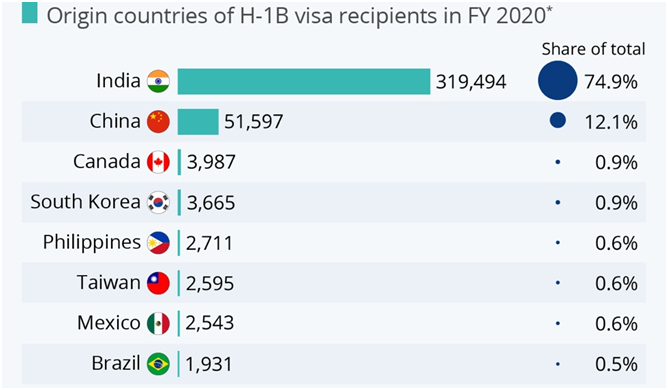Thursday, 22nd December 2022
The ‘invincible originality’ of Srinivasa Ramanujan
THE MAN WHO KNEW INFINITY: SRINIVASA RAMANUJAM
In News
National Mathematics Day is celebrated every year on December 22, to commemorate the birth anniversary of Srinivasa Ramanujan. The day is celebrated with the aim to make people aware of the importance of mathematics and the advancements and developments made in the field.
About Srinivas Ramanujan:
- Srinivasa Ramanujan was a great mathematician, who greatly contributed towards mathematical analysis, number theory, infinite series and continued fractions.
- He was born on 22nd December 1887 in Erode, Tamil Nadu and in 1903 he secured a scholarship to the University of Madras but lost it the following year because he neglected all other subjects in pursuit of mathematics.
- In 1911, Ramanujan published the first of his papers in the Journal of the Indian Mathematical Society.
- In 1913 he began a correspondence with British mathematician G. H. Hardy which led to a special scholarship from the University of Madras and a grant from Trinity College, Cambridge.
- In 1918 he was elected to the Royal Society of London and became one of its youngest members. He was the first Indian to be elected a Fellow of Trinity College, Cambridge University.
- In 2015, a biopic on the life of Ramanujan was made, named “The Man Who Knew Infinity”.
- In 2021, a team of Israeli scientists created a software tool called The Ramanujan Machine that creates mathematical conjectures which are equations without proof. Mathematicians then prove or disprove these conjectures, thereby establishing theorems.
What were the contributions of Ramanujan to the field of Mathematics?
- Value of Pi: Ramanujan contributed multiple formulae to calculate pi with great accuracy to billions of digits. His most treasured finding was his infinite series for Pi.
- Formulas and Equations: Ramanujan compiled around 3,900 results consisting of equations and identities. Ramanujan recorded his mathematical results, mostly equations, in his notebooks. Four such books have been preserved.
- Ramanujan conjecture: It was published in 1916 and proved in 1973 by Pierre Deligne. The conjecture inspired the development of theory of Galois representation that was employed in Andrew Wiles’ proof of Fermat’s last theorem published in 1995.
- Mock theta functions: Mock-theta function was his swan song, on which he worked in the last few days of his life. It has found applications in the study of black holes in astrophysics.
- Ramanujan number: 1729 is known as the Ramanujan number. It is the smallest number which can be expressed as the sum of two different cubes in two different ways.
- Elliptic Curve Cryptography: Ramanujan’s contributions to the study of elliptic curves are significant as he developed certain equations called class invariants which generate elliptic curves suitable for encryption and this led to Elliptic Curve Cryptography, an efficient cryptographic technique, in 1985, many decades after his demise.
- Other Contributions: He also made notable contributions like the hypergeometric series, the Riemann series, the elliptic integrals, the theory of divergent series, and the functional equations of the zeta function.
Source:
https://www.thehindu.com/opinion/op-ed/the-invincible-originality-of-srinivasa-ramanujan/article66289747.ece/amp/
Click the link below to attempt the daily MCQs and the Mains based questions.
Amendments to the Co-operative Societies Act
In News:
- Bill proposed in parliament to amend the Co-operative Societies Act
About the News:

- Union Ministry of Cooperation has recently proposed the “Multi-State Co-operative Societies (Amendment) Bill 2022” in Parliament to bring changes in the functioning of multi-state co-operative societies.
- At present, any cooperative operating in more than one state is registered under the Multi-State Co-operative Societies Act (MSCS) of 2002 with the board having representation from all states they operate in.
- The new law aims to wield away control of state governments in any way in the administrative and financial functioning of these societies.
- Although the new proposal has been criticised for undermining federal structure, developments over the years have necessitated required changes in the Act so as to strengthen the co-operative movement in the multi-State co-operative societies
|
Cooperatives:
|
Major highlights of the bill:
- About: Multi-State Co-operative Societies Act, 2002 was enacted to consolidate and amend the law relating to co-operative societies, with objects not confined to one State and serving the interests of members in more than one State.
- New rules for merger: The Bill provide for the merger of “any co-operative society” into an existing multi-state co-operative society.
- Resolution: Any co-operative society may, by a resolution passed by majority of not less than two-thirds of the members present and voting at a general meeting of such society, decide to merge into an existing multi-State co-operative society.
- Co-operative Election Authority: The bill seeks to establish an authority with a view to bring “electoral reforms” in the co-operative sector.
- Members: As per the proposed amendment, the authority shall consist of a Chairperson, a Vice-Chairperson and members not exceeding three to be appointed by the Centre.
- Appointment: The bill seeks to appoint Chairperson, vice-chairperson and members to the office with prescribed qualification and experience for each.
- Tenure: The Chairperson, Vice-Chairperson or Member of the Authority will hold office for three years or until they attain the age of 65 years, whichever is earlier, and they shall be eligible for re-appointment.
- Stricter punishments: The Bill seeks to amend section 104 of the Act to increase the amount of penalty for certain offences including unlawful gains as punishable with imprisonment and fine.
- Ombudsman: Proposal to appoint one or more “Co-operative Ombudsman” with a territorial jurisdiction for inquiring into the complaints made by the members and the powers of civil court in summoning and examination.
- Dedicated fund: The Bill seeks to establish a “Co-operative Rehabilitation, Reconstruction and Development Fund” for revival of “sick multi-State co-operative societies”.
- Auditing: New rules for “concurrent audit” for multi-state co-operative societies having an annual turnover or deposit of more than the amount as determined by the Central Government.
- Cooperative Information Officer: Provisions for appointment of a “Co-operative Information Officer” to provide information relating to affairs and management of the multi-state co-operative society to the members of such society.
Source:
https://indianexpress.com/article/explained/amendments-to-the-co-operative-societies-act-8337593/
Click the link below to attempt the daily MCQs and the Mains based questions.
The INS Mormugao and its capabilities
In news
Indian Naval Ship (INS) Mormugao (Pennant 67), a P15B stealth-guided missile destroyer has been commissioned into the Indian Navy.
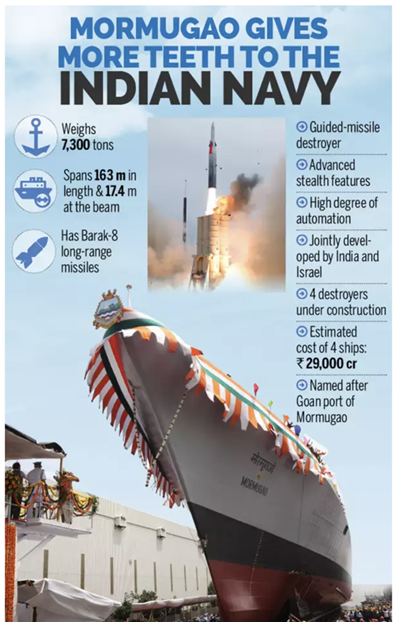 About INS Mormugao
About INS Mormugao
- INS Mormugao is the warship ‘Yard 12705’, named after the Goan port city of Mormugao, and is the second of the four Visakhapatnam-class destroyers being built under the Indian Navy Project 15B, or P15B.
- It is propelled by four gas turbines in a combined gas and gas (COGAG) configuration.
- Its firepower comprises BrahMos surface-to-surface missiles (SSM), Barak-8 surface-to-air (SAM) missile, RBU-6000 anti-submarine rocket launchers.
- It is also equipped to carry and operate multi-role helicopters, and its enhanced stealth features ensure a reduced Radar Cross Section or radar signature.
- It is built with over 75% indigenous content, and its commissioning is a shot in the arm for India’s self-reliance efforts and crucial for the 15-year Indian Naval Indigenisation Plan (INIP) 2015-2030.
|
Project 15B
|
Significance of INS Mormugao
- With over 75% indigenous content, it is a testimony to India’s excellence in the design and development of warships and an example of our growing indigenous defence production capabilities, in line with ‘Aatmanirbhar Bharat’.
- Amid growing Chinese strategic interests in the Indian Ocean region, INS Mormugao bolsters India's maritime capabilities in the region to counter the threat.
- It also secures rule-based freedom of navigation, and security of sea lanes, to ensure freedom of trade.
Source
The INS Mormugao and its capabilities
Image source
https://timesofindia.indiatimes.com/india/the-indian-navy-gets-its-new-stealth-destroyer-mormugao/articleshow/54379510.cms
Click the link below to attempt the daily MCQs and the Mains based questions.
The tussle between Lieutenant Governors and Chief Ministers
Why in news?
- Recently, the Delhi Lieutenant-Governor (LG) has directed Chief Secretary to implement a 2016 order of the Committee on Content Regulation in Government Advertising (CCRGA).
- The order calls for recovering ₹97.14 crores plus interest from the ruling Party (AAP) for “political advertisements” published or telecast as government advertisements in 2015 and 2016.
- The move added to the long list of escalations between the AAP-led Delhi government and the L-G.
|
What is CCGRA?
|
Supreme Court on Delhi Governance Structure
- The 69thConstitutional Amendment inserted Article 239AA, which declared the Union Territory of Delhi to be administered by a L-G who works on ‘aid and advice of elected legislative assembly.
- However, the "help and advise" clause only applies to issues that the elected Assembly is authorised to address under the State and Concurrent Lists, with the exception of matters involving public order, police, and land.
- Additionally, the Article 239AA states that the L-G must either act with the support and counsel of the Council of Ministers or he must carry out the President's decision upon a request from him.
- Article 239AA also empowers the L-G to refer ‘any matter’ involving the difference of opinion with the Council of Ministers to the President.
- Thus, this dual control between L-G and the elected government leads to power tussle, which was referred to the Supreme Court in 2018.
Related Judgements
- In NCT vs UOI case, 2018:The five-judge Bench invoked the rule of purposive construction to say that the objectives of the 69th Constitutional Amendment Act shall guide the interpretation of Article 239AA.
- L-G to Act on Aid and Advice:The Court ruled that the L-G is bound by the "aid and advice" of the Council of Ministers and noted that the Delhi Assembly also has the authority to pass laws on all topics covered by the Concurrent List and all State List topics, with the exception of three topics.
- With the exception of situations where he sends a topic to the President for a final decision, the L-G should act on the "help and advice" of the Council of Ministers.
- Any Matter is Not Every Matter:The Supreme Court ruled that "any matter" cannot be interpreted to mean "every matter," and that such a reference should only occur in exceptional circumstances with regard to the LG's authority to refer to the President any matter on which there is a difference of opinion between the L-G and the Council of Ministers.
- L-G as facilitator:L-G shall act as a facilitator rather than anointing himself as an adversary to the elected Council of Ministers.
- New Delhi Cannot be Given Statehood:The Court also decided that Delhi's National Capital Territory cannot receive the status of a State under the current constitutional framework.
Content Source Link:
https://www.thehindu.com/news/cities/Delhi/explained-what-is-the-latest-clash-between-aap-and-the-delhi-l-g/article66290188.ece
https://indianexpress.com/article/cities/delhi/delhi-news-live-updates-weather-traffic-politics-aap-bjp-8331931/ https://economictimes.indiatimes.com/topic/aap-vs-lg
Click the link below to attempt the daily MCQs and the Mains based questions.
Pandit Sundarlal Sharma - Edukemy Current Affairs
- Context: The late freedom fighter, social reformer and noted litterateur Late Pandit Sundarlal Sharma’s birth anniversary was observed recently.
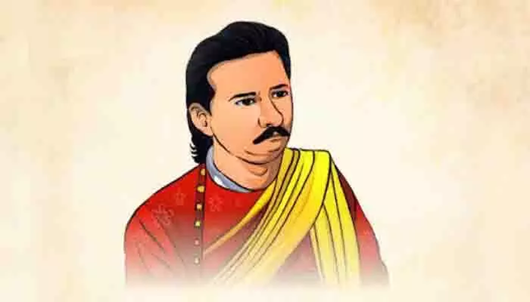
- Pandit Sudarlal Sharma, known as Gandhi of Chhattisgarh, worked tirelessly to remove the evil practices like untouchability, untouchability, conservatism spread in rural areas.
- He joined many national movements during the freedom struggle and worked for the strengthening of the freedom movement in Chhattisgarh.
- He founded “Smitra Mandal” at his birthplace, “Chamshur”, for the sale of indigenous goods.
- He was the principal architect of the “Kandel Nahar Satyagraha”, known for the fight for the rights of farmers, and an example of civil disobedience.
- Pandit Sunderlal Sharma was also a learned scholar in drama, sculpture and painting. He is the author of text literature like 'Prahlad Charitra', 'Karuna-Pachisi', & 'Satnami-Bhajan-Mala'
Sources:
https://world360news.com/en/chief-minister-salutes-pandit-sundarlal-sharma-his-death-anniversary-2020
Image source:
https://jantaserishta.com/local/chhattisgarh/chief-minister-remembers-the-invaluable-contribution-of-pandit-sunderlal-sharma-on-his-birth-anniversary-1848151
Click the link below to attempt the daily MCQs and the Mains based questions.
Great Lakes - Edukemy Current Affairs
- Context: A recent study found that US-Canada Great Lakes are turning acidic.
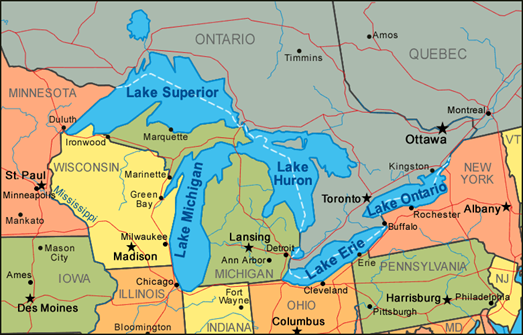
- The present configuration of the Great Lakes basin is the result of the movement of massive glaciers through North America which began during the Pleistocene Epoch.
- The Great Lakes comprises 5 interconnected bodies of water between the US-Canada border that drain into the Gulf of St Lawrence in the North Atlantic through the St Lawrence River.
- They are the largest group of freshwater lakes in the world.
- The US-Canada border passes through Lakes Superior, Huron, Erie, and Ontario; Lake Michigan lies entirely in the US.
- Lakes Michigan and Huron are sometimes considered as a single water body; taken together, they are the world’s largest freshwater lake by surface area.
- Lake Huron is the world’s third largest freshwater lake, after Lake Superior and Lake Victoria.
|
Category |
Lakes |
|
1. Lake Superior – North America 2. Lake Victoria – Africa 3. Lake Huron – North America 4. Lake Michigan – North America |
|
1. Baikal – Asia 2. Tanganyika – Africa 3. Superior – North America |
|
1. Lake Baikal – Russia 2. Tanganayaka |
Source:
https://indianexpress.com/article/explained/explained-climate/us-canada-great-lakes-turning-acidic-study-explained-8337311/
https://www.britannica.com/place/Great-Lakes
Click the link below to attempt the daily MCQs and the Mains based questions.
BF.7 Omicron Sub-Variant - Edukemy Current Affairs
- Context: A current surge in BF.7 (COVID-19 variant) has been witnessed in China.
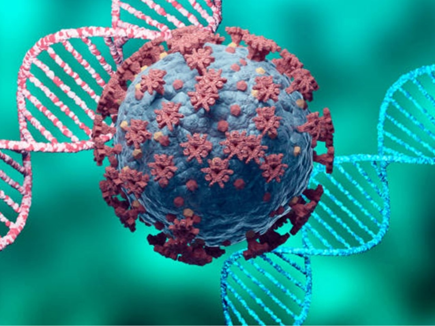
- 7 is a sub-lineage of the Omicron variant BA.5 and has the strongest infection ability since it is highly transmissible, has a shorter incubation period, and has a higher capacity to cause reinfection or infect even those vaccinated.
- A study published in the ‘Cell Host and Microbe’ journal reported that the BF.7 sub-variant has a 4-fold higher neutralisation resistance than the original D614G variant.
- A higher neutralisation resistance means there is a higher likelihood of the variant spreading in a population and replacing other variants.
- 7 accounted for more than 5% of US cases and 7.26% of UK cases in October.
- At present, a recombinant variant XBB is the most common variant in India, accounting for 65.6% of all cases in November.
|
The viruses are non-cellular organisms that are characterized by having an inert crystalline structure outside the living cell. |
Source:
https://indianexpress.com/article/explained/explained-health/covid-bf-7-omicron-sub-variant-china-virus-8337055/
Click the link below to attempt the daily MCQs and the Mains based questions.
India in FIFA World Cup - Edukemy Current Affairs
- Context: What will it take for India to qualify for the FIFA World Cup?

- The 2026 FIFA World Cup is going to be different as it will have 48 teams, 16 more than the number of teams in this year’s edition, almost doubling the number of slots the Asian Football Federation (AFC) receives, to 8 from 4.5.
- According to the latest FIFA rankings, India is at 106 and 19th in Asia, which means that even with eight slots, India will have to cause some major upsets in qualifying.
- India was referred to as “the sleeping giant of football” in 2006, but progress has been slow as it has been unable to break through to the top 100 for a sustained period.
- Experts say that the most important period of development for football players is the early teens as this is the best age for technical education, and learning concepts and the players are still young enough to be fast learners.
- Problems
- Football academies in India lack infrastructure and world-class coaching.
- India does not house established European scouting networks which identify and develop talent at a world-class level.
- Indian football lacks cultural appeal. Cricket remains king with football fans being concentrated in regions such as the Northeast, Kerala, Goa and Bengal.
Sources:
https://indianexpress.com/article/explained/explained-sports/what-will-it-take-for-india-to-qualify-for-the-fifa-world-cup-8336377/
Image source: https://khelnow.com/football/2022-12-world-football-when-will-world-cup-2026-qualifiers-begin
Click the link below to attempt the daily MCQs and the Mains based questions.
National Mathematics Day - Edukemy Current Affairs
Why in news? Every year, Srinivasa Ramanujan’s birth anniversary on December 22 is commemorated as National Mathematics Day.
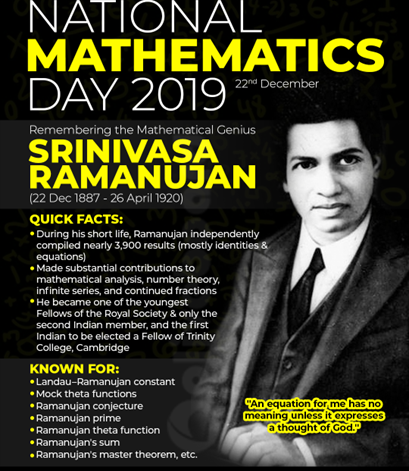 About
About
- Srinivasa Ramanujan was born on 22nd December 1887 in Erode, Tamil Nadu and died on 26th April 1920 in Kumbakonam, Tamil Nadu, India.
- Ramanujan was one of the youngest members of Britain's Royal Society and the first Indian to be elected a Fellow of Trinity College, Cambridge University.
Contribution to Mathematics:
- Formula and Equations
- Game Theory
- Ramanujan number - 1729
https://indianexpress.com/article/education/why-we-celebrate-national-mathematics-day-its-history-significance-and-more-8335906/
Click the link below to attempt the daily MCQs and the Mains based questions.
Appropriation Bill - Edukemy Current Affairs
Why in news? Recently, Opposition slams govt during debate on Appropriation Bills in Rajya Sabha
About
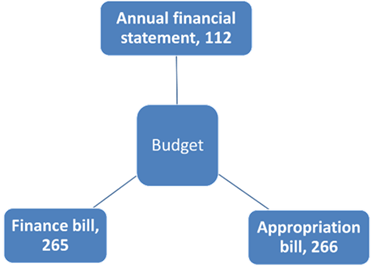
- Appropriation Bill gives power to the government to withdraw funds from the Consolidated Fund of India for meeting the expenditure during the financial year.
- As per article 114 of the Constitution, the government can withdraw money from the Consolidated Fund only after receiving approval from Parliament.
- The amount withdrawn is used to meet the current expenditure during the financial year.
- The Appropriation Bill is introduced in the Lok Sabha after discussions on Budget proposals and Voting on Demand for Grants.
- The defeat of an Appropriation Bill in a parliamentary vote would lead to the resignation of a government or a general election.
https://indianexpress.com/article/india/opposition-slams-govt-during-debate-on-appropriation-bills-in-rajya-sabha-8335547/
Click the link below to attempt the daily MCQs and the Mains based questions.
Ayurswasthya Yojana - Edukemy Current Affairs
Why in news? Recently, the AYUSH ministry presented the status of the centres of excellence scheme ‘AYURSWASTHYA Yojana’.
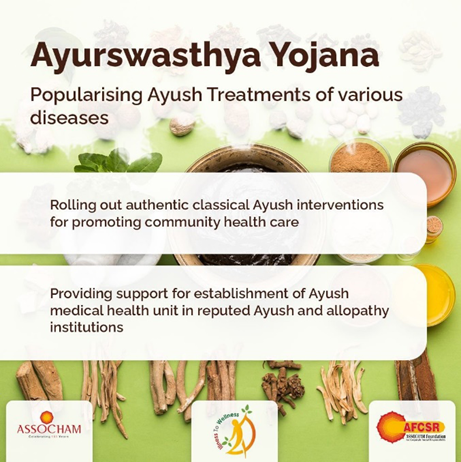 About
About
- It has two components:
- AYUSH and Public Health: To promote AYUSH intervention for community health care.
- Upgradation of facilities to Centre of Excellence: To support the establishment of advanced/ specialized AYUSH medical health units in reputed AYUSH and Allopathic institutions both in the Government and Non-Government sectors.
- Financial assistance is provided to eligible individual organizations/institutes for establishing and upgrading their functions & facilities and/or for research & development activities in AYUSH.
https://www.pib.gov.in/PressReleasePage.aspx?PRID=1885096
Click the link below to attempt the daily MCQs and the Mains based questions.
Data Smart initiative - Edukemy Current Affairs
Why in news? Ministry of Housing & Urban Affairs wins Platinum Icon in Digital India Awards 2022
About

- The Data Smart Cities initiative aims to harness the power of data for better governance in India’s 100 Smart Cities.
- Based on a ‘People, Platform, Process’ strategy, this initiative is leading to the convergence of the Ministry’s efforts for performance management, empowerment of communities, and research, co-creation & open innovation.
- To leverage and utilize valuable data being generated in cities via the network of intelligent devices and systems, the Smart Cities Mission, MoHUA launched the Data Smart Cities (DSC) Initiative.
https://newsonair.gov.in/News?title=Ministry-of-Housing-%26-Urban-Affairs-wins-Platinum-Icon-in-Digital-India-Awards-2022&id=452701
Click the link below to attempt the daily MCQs and the Mains based questions.
Social progress index - Edukemy Current Affairs
Why in news? Union territories top India's Social Progress Index 2022
About

- Social Progress Index (SPI) for States and Districts made by the Institute for Competitiveness and Social Progress Imperative was submitted to Economic Advisory Council- Prime Minister and released.
- SPI is a comprehensive tool that can serve as a holistic measure of a country’s social progress at the national and sub-national levels.
- The index assesses states and districts based on 12 components across three critical dimensions of social progress – Basic Human Needs, Foundations of well-being, and Opportunity.
- The index uses an extensive framework comprising 89 indicators at the state level and 49 at the district level.
https://www.cnbctv18.com/india/social-progress-index-2022-full-list-of-states-puducherry-tops-jharkhand-bihar-rank-low-15462981.htm/amp
Click the link below to attempt the daily MCQs and the Mains based questions.
Andaman Aceh Link - Edukemy Current Affairs
Why in news? Recently India, and Indonesia have reviewed challenges in forging connectivity between Andaman, Aceh.
About
- India-Indonesia joint task force reviewed challenges in forging connectivity between Andaman and Nicobar Islands (A&N) and Aceh province.
- Envisioned in 2018 under “Shared Vision of Maritime Cooperation in the Indo-Pacific”, Andaman-Aceh Link connects the Sabang city of Aceh Province, Indonesia with the Andaman and Nicobar Islands.
- Around 90 nautical miles from A&N, the Great Channel (or the Six Degree Channel) separates Nicobar from Aceh Province.
- Sabang overlooks the Andaman Sea and Strait of Malacca, making it strategically important for India with other benefits like boosting tourism in A&N.

https://www.hindustantimes.com/india-news/india-indonesia-review-challenges-in-forging-connectivity-between-andaman-aceh-101671512449108-amp.html
Click the link below to attempt the daily MCQs and the Mains based questions.
Upholding the autonomy of the Election Commission: The Hindu
Benchmarks for Election Commission appointments
Exam View: Current events of national importance (ECI, CEC, Article 324, PIL, constitution bench etc), Appointments to various constitutional posts, powers functions and responsibilities of various constitutional bodies etc.
In News: A Constitution Bench of the Supreme Court heard a crucial case about the method by which the Election Commission of India (ECI) is constituted and Election Commissioners.
The way India’s constitutional and political structures have evolved over the years seems to have made elections almost a mechanistic and ritualistic exercise. The reason behind this is the setting up and functioning of the Election Commission of India (ECI).
This has come into public discourse because of the hearings in the Supreme Court on the appointment of Election Commissioners (ECs). While many issues related to the ECI have been discussed in court hearings and outside, a deeper look at the ECI may be useful, given its role in the preservation of democracy in the country.
|
Election Commission of India (ECI) |
|
The Election Commission of India is an autonomous constitutional authority responsible for administering Union and State election processes in India.
|
Constituent assembly on working of constitution:
 Issues related to elevation of Election Commissioner to Chief Election Commissioner:
Issues related to elevation of Election Commissioner to Chief Election Commissioner:

Steps to be taken: An existing committee of Parliament or a new committee:
- It should propose the qualifications and requirementsfor persons to be appointed as ECs/CEC.
- Two-third majority: The proposals of the committee should be put to Parliament and should be considered approved only if they are approved by a two-thirds majority of the members of Parliament present and voting.
- Selection of individuals: The committee should be entrusted with the task of searching for and selecting individuals proposed to be appointed as ECs/CEC.
- Recommendations: The committee should send its recommendations to Parliament for consideration. Recommendations of the committee should be considered approved by Parliament only if approved by a two-thirds majority of the members of Parliament present and voting.
- Presidential approval and Age limit: They should be sent to the President for approving the appointments. Such persons should stay in their positions for six years or the age of 75 years, whichever is earlier. Persons above the age of 69 yearsshould not be appointed.
- Removal: Persons so appointed should be removable only by a process of impeachment as applicable to the Supreme Court judges.
If we want ECs to match the qualities stated by Dr Ambedkar and Dr Prasad we need to go beyond how Article 324 of the Constitution and the Election Commission (Conditions of Service of Election Commissioners and Transaction of Business) Act, 1991, have been operationalised so far.
If democracy in its real sense is to be preserved in the country, the importance of the ECI has to be recognised and accepted. The guiding principles must be functional and effective independence from the executive, from the moment of appointment to retirement, and then beyond.
https://www.thehindu.com/opinion/lead/upholding-the-autonomy-of-the-election-commission/article66285945.ece/amp/
Click the link below to attempt the daily MCQs and the Mains based questions.
Bengal Village: Ancient Metalcraft's Glory
Background
West Bengal is reviving its traditional metal craft Dokra, with the support of social enterprises and local artisans. Dokra has found its place in art maps, giving artisans in remote villages such as Lalbazaar, much-needed financial stability.
About Dokra Metalcraft
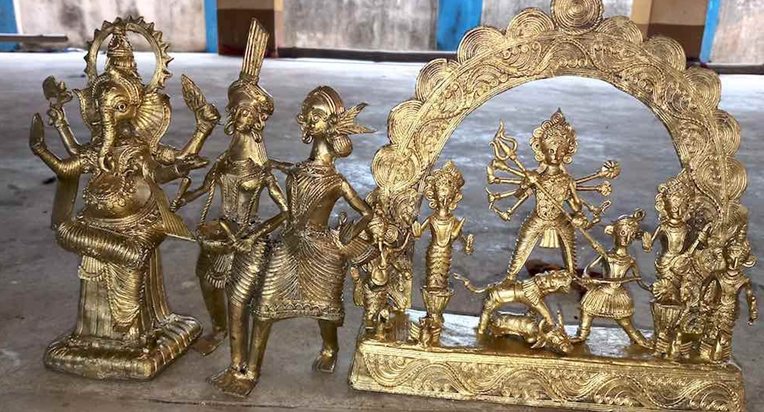
- Dokra is an ancient craft of metal casting through the cire-Purdue method or lost wax technique which is believed to be 5,000 years old.
- It is believed that the metal smiths of Dokra originally belonged to the Chota Nagpur plateau. But today the art has spread out to neighbouring states like West Bengal, Telangana etc.
- Dokra art is difficult to make and each figure takes about a month to make. There are many processes involved, for which seven or eight varieties of clay are required, apart from other raw materials.
- The entire process of making Dokra artefacts involves melting metal at very high temperatures in furnaces.
- MoU signed between the state government and UNESCO in 2013 enabled the formation of rural craft hubs, based on a UNESCO-endorsed model called ‘Art for Life’.
- Today with the support of various social enterprises artists are able to get exposure to the international market and also sell their products abroad.
Adilabad Dokra
- Adilabad Dokra, made by the Woj community native to the Adilabad district of Telangana, was given a GI tag in 2018.
- They used the cire perdue method to create metal casting products such as idols of local deities, dancing figures, bells, jewellery, statues, animals and birds, jewels and many other decorative items.
Source:
https://www.villagesquare.in/west-bengal-brings-dokra-metal-craft-back-from-brink/
Click the link below to attempt the daily MCQs and the Mains based questions.
Share the article
Get Latest Updates on Offers, Event dates, and free Mentorship sessions.

Get in touch with our Expert Academic Counsellors 👋
FAQs
UPSC Daily Current Affairs focuses on learning current events on a daily basis. An aspirant needs to study regular and updated information about current events, news, and relevant topics that are important for UPSC aspirants. It covers national and international affairs, government policies, socio-economic issues, science and technology advancements, and more.
UPSC Daily Current Affairs provides aspirants with a concise and comprehensive overview of the latest happenings and developments across various fields. It helps aspirants stay updated with current affairs and provides them with valuable insights and analysis, which are essential for answering questions in the UPSC examinations. It enhances their knowledge, analytical skills, and ability to connect current affairs with the UPSC syllabus.
UPSC Daily Current Affairs covers a wide range of topics, including politics, economics, science and technology, environment, social issues, governance, international relations, and more. It offers news summaries, in-depth analyses, editorials, opinion pieces, and relevant study materials. It also provides practice questions and quizzes to help aspirants test their understanding of current affairs.
Edukemy's UPSC Daily Current Affairs can be accessed through:
- UPSC Daily Current Affairs can be accessed through Current Affairs tab at the top of the Main Page of Edukemy.
- Edukemy Mobile app: The Daily Current Affairs can also be access through Edukemy Mobile App.
- Social media: Follow Edukemy’s official social media accounts or pages that provide UPSC Daily Current Affairs updates, including Facebook, Twitter, or Telegram channels.


